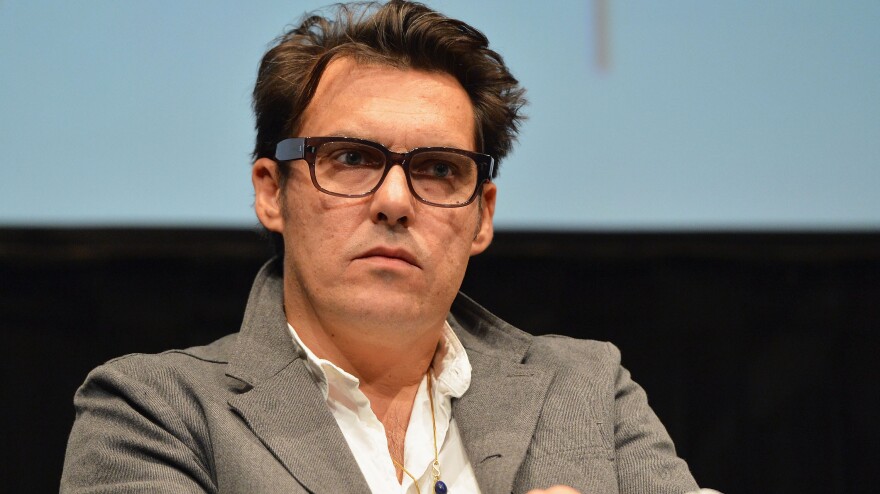Leo Tolstoy's epic novel Anna Karenina has captivated readers since the 1800s — and movie directors have been among the intrigued, adapting the story over and over.
The latest is from director Joe Wright, who with Pride and Prejudice and Atonement to his credit certainly knows his way around a literary adaptation. Those films starred Keira Knightley, who has worked with Wright once again as the story's tragic heroine.
The film tells the tale of the titular Anna, a Russian socialite trapped in a loveless marriage. After first resisting the dashing Count Vronsky, played by Aaron Taylor-Johnson, she falls for him, betraying her husband in a doomed loved affair.
In the movie, Wright chose to have much of the action take place in a theater, on the stage. A society ball, a horse race, a field of flowers, arguments, intrigue and lovemaking all happen under the proscenium arch — as well as backstage and in the rafters.
Wright tells NPR's Renee Montagne that the decision to frame the story that way was about breathing new life into the classic Russian romance.
Interview Highlights
On why he decided not to shoot on location
"Well, originally the screenplay written by Tom Stoppard was a fairly literal translation. It was set in various palaces around Russia. And so we were out on location scout, being shown around these incredible palaces, and then someone would say, 'Well, we've shot seven Anna Kareninas here before.' Or, looking at locations in the U.K., and people would say, 'Well, we've made, you know, three Keira Knightley period movies here before.'
"And so I began to feel like I was treading the sort of ground that I — I or others — had trod before. So I wanted to find a way of telling this story that was aesthetically perhaps a little bit more modern, and a way of stylizing the piece that would allow me to be a bit more expressive with the characters' emotions and internal landscapes."
On incorporating the theater into the film's design
"Once I decided that I wanted to set it in one single location, I had to think about what that location would be.
"I discovered that Russian society of the 1870s was really sort of experiencing a kind of identity crisis. They weren't quite sure where to place themselves — whether they were Eastern or Western — and they chose to appropriate a French mode of living. So they all spoke French, they wore the latest Paris fashions, the ballrooms that they frequented even were mirrored completely so that they could observe themselves. So they really lived their lives as if upon a stage.

"So in terms of society, the theater felt like an appropriate metaphor. But also in terms of Anna's story ... what the book is about for me is about finding an authentic form of life, and the roles that we play, and the roles that are sometimes no longer appropriate."
On Anna Karenina as a character
"Anna is not a kind of heroine. In fact, she's probably an anti-heroine. I think Tolstoy set out to write a character who he would hold up to be culpable and morally corrupt. But as he wrote the book, it's as if Anna kind of rose up off the page in front of him and he began to fall in love with her.
"And so I think Tolstoy probably had quite an ambivalent relationship with Anna. And that for me is the enduring fascination of the novel. That she is a character who is, at times, cruel and yet, at times, she is also — she's not a hypocrite, and she believes in something beautiful. And so Anna is both terrible and wonderful, and I think that's why I love her."
Copyright 2020 NPR. To see more, visit https://www.npr.org.



